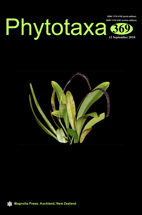Abstract
The Chinese medical plant “Beimu” Fritillaria ebeiensis has been merged in F. anhuiensis. In this study, we used ITS, two plastid (rpl16 and matK) markers, and morphological characters to investigate the relationship between F. ebeiensis and F. anhuiensis. The results show that F. ebeiensis is phylogenetically distinct from F. anhuiensis. In addition, the morphology of both leaf epidermis and bulbs are different between the two species. As a consequence, we treat F. ebeiensis as a separate species, rather than synonymy of F. anhuiensis.

